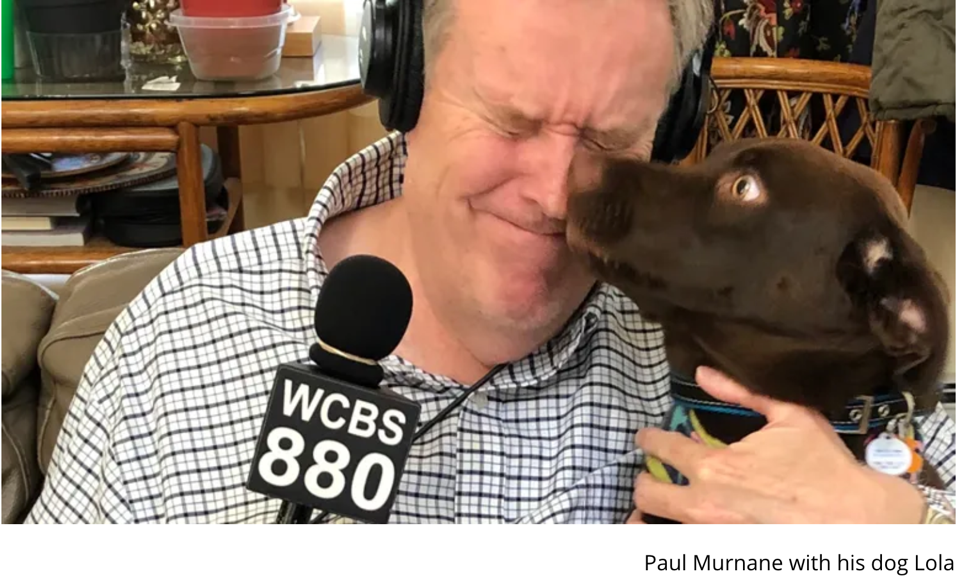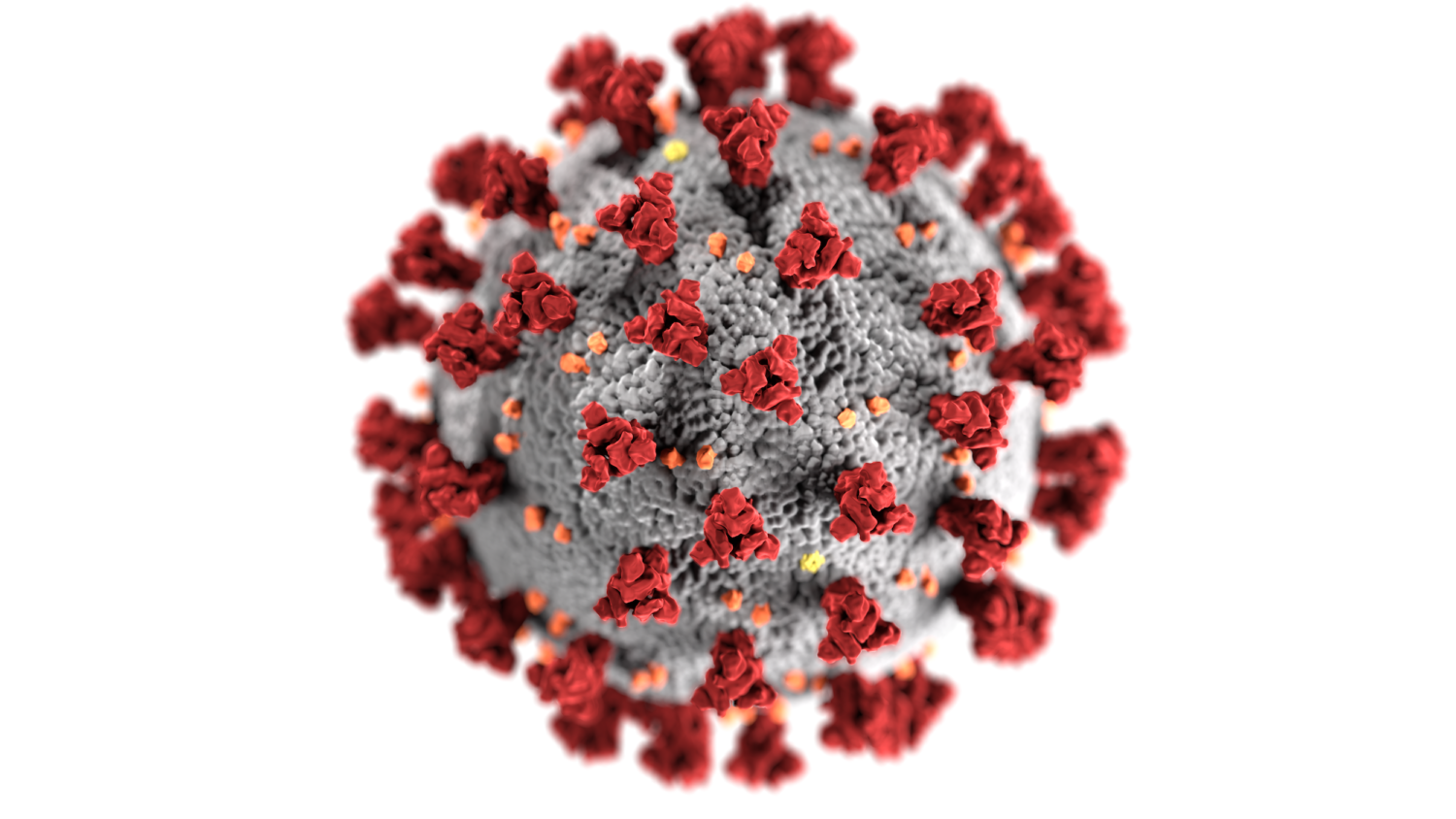 Covering COVID-19 is a daily Poynter briefing about journalism and coronavirus, written by senior faculty Al Tompkins. Sign up here to have it delivered to your inbox every weekday morning.
Covering COVID-19 is a daily Poynter briefing about journalism and coronavirus, written by senior faculty Al Tompkins. Sign up here to have it delivered to your inbox every weekday morning.
I wouldn’t be surprised to see the above image on the cover of Time magazine in December.
But what the heck is it exactly? My colleague Roy Peter Clark challenged me to get some answers.
For starters, the ball with the nodules on it that everyone is using to show the coronavirus behind the COVID-19 pandemic is an illustration that came from the Centers for Disease Control and Prevention. Lots of other illustrations have made the rounds. This one makes it look lime green. Here is a lovely purple and yellow version. This one makes it appear to be rose red. I like this one that looks like an orange with green thumbtacks stuck in it.
The point is that they are all illustrations, not photographs.
The real image you would see through an electron microscope would not be quite so dramatic. It would look more like this.
 If you were a CDC scientist, those little circles at the top of the image and the black dots inside those circles would excite you. As they said in the movie “Top Gun,” “That’s your bogey.”
If you were a CDC scientist, those little circles at the top of the image and the black dots inside those circles would excite you. As they said in the movie “Top Gun,” “That’s your bogey.”
There are different incarnations of coronavirus, but they have something in common — those little nodules that make it look like a toy with suction cups that you could toss against the wall and make it stick. This kind of virus is called a “membranous envelope.” It sounds more complicated than it is. It is a protein membrane around a genetic material. The grayish shell in the CDC illustration is called the “capsid.”
Those little nodules are proteins. The tall ones on the CDC illustration are called S Proteins, the shorter ones are M, E and HE proteins. You can learn more than you want to know about those proteins here. Simply put, a virus is genetic material in a protein casing. Wait — what is that genetic material? Read on.
Coronaviruses are called RNA viruses. That means the genetic material that makes up these viruses is RNA. If that rings a bell for you, because you know what DNA is, you’re on the right track. RNA is “ribonucleic acid,” which is a nucleic acid that exists in all living cells. Its main role is to serve as a messenger, carrying instructions from DNA for controlling the synthesis of proteins. DNA and RNA are different structures: DNA consists of a double strand of nucleotides, whereas RNA is a single strand.
A bit of virus trivia — they are not considered to be “alive” because, unlike bacteria, they can’t perform metabolism (make energy from food) and they can’t respond to stimuli. They live in a kind of gray area between simple molecules and living organisms. So, when people call viruses smart or evolving like they are a living thing, it is a bit of a misnomer.
Viruses reproduce by injecting their genetic material into a host cell. That forces the host cell to make copies of the virus, rather than whatever the cell would normally be doing.
We have only really known about viruses since the late 1800s, found when scientists were studying plants. And, question of the day, who discovered that first virus?
The International Journal of Infectious Diseases reported that it was Russian botanist Dmitri Ivanovski, with verification from Dutch microbiologist Martinus Beijerinck, who discovered what we now know as the tobacco mosaic virus. Their research was built on the work of German agricultural chemist Adolf Mayer. Like all such discoveries, there were many steps along the way from many scientists. And like many so-called “breakthroughs” it took a couple of decades to fully appreciate what they had learned.
The discovery and understanding of it came just in time for the Spanish flu outbreak of 1918 that killed more than 1 million people across the world, 200,000 of them in the United States.
Why are we seeing more wildlife during the pandemic?
Some of the images you see of wildlife showing up in unusual urban places are fake photos. But a lot of them are not. The Colorado Parks and Wildlife Twitter feed includes images of bears in backyards, bobcats strolling neighborhoods and elk on a golf course.
Shannon Schaller, a senior wildlife biologist for Colorado state, said yes, there have been some short-term changes in animal behavior, but “the human quarantine would have to continue for years to get wildlife to truly change their behaviors.”
Wildlife, she said, wants to avoid human contact. So when we use hiking trails, parks, golf courses and even streets less, wildlife are more likely to go there than when we are creating a racket. The state wildlife department explained:
“Wildlife learns to adapt to what we are doing and as we change,” Schaller said. “Whether that is being outside more, concentrating in places where we leave trash, or because we avoid an area, then they learn to adapt to that. I would not say that all species adapt instantaneously, it is a learned thing over time, but clearly most wildlife would like to avoid confrontation with people.”
“They do learn to enjoy the benefits people sometimes provide, like illegally leaving out food,” she continued. “But as we slow down or even eliminate our activity in certain areas and they feel the comfort of being able to hunt, eat or rest because we are not there, that’s logical.”
Popular Science offered another take that I think is really interesting. Maybe we are seeing more wildlife because we have slowed down enough to notice.
However, in the case of the larger animals, some officials think the change is mainly due to our own perception. Now, with many at home and bored, we’re perhaps increasingly staring out the window and going on walks in our neighborhood. A press release by the Colorado Parks and Wildlife department says that the increased sightings are more likely just due to being at home. “With more people at home looking or being outside, wildlife sightings could go up,” reads the statement. “This won’t be a new phenomenon, the animals have always been there, but they may have previously gone undetected.”
[the_ad id=”667872″]
Is wearing a mask against the law?
Here is Florida’s law (Chapter 876 Section 12 – 2011 Florida Statutes):
No person or persons over 16 years of age shall, while wearing any mask, hood, or device whereby any portion of the face is so hidden, concealed, or covered as to conceal the identity of the wearer, enter upon, or be or appear upon any lane, walk, alley, street, road, highway, or other public way in this state.
One of our newsletter readers, Jim Sweeney, pointed out to me that other states, including Virginia and Washington, D.C., have similar laws.
Does that mean that people who wear masks to protect against COVID-19 are breaking the law? Florida’s law stretches back to efforts in 1951 to force Ku Klux Klan members to reveal their faces. But the anti-mask law is rarely enforced these days. And legislators have added language to make it clear that mask-wearing laws only apply to people who wear masks in an effort to intimidate or commit a crime. There are also exemptions for people wearing masks during emergency drills, in theatrical productions and for holiday celebrations.
You can check with your state laws to see if they have similar language.
The advantage of bilingual leaders
I was talking with a friend at a Univision TV station the other day and it got me thinking about how valuable it would be, especially now, for governors, mayors and national political leaders and experts to be bilingual.
U.S. President Franklin Delano Roosevelt spoke German and French. A handful of current high-ranking U.S. officials, including Sens. Marco Rubio and Mitt Romney, are bilingual. Rubio speaks Spanish and Romney speaks French.
In Canada, where I teach fairly often, the prime minister will deliver an announcement in English and then do the same announcement in French.
When Jeb Bush was governor of Florida, it was so impressive to see him do hurricane emergency briefings in English and Spanish — and it was incredibly valuable for the sizable Spanish language audience.
It is more than just creating good TV or radio soundbites. When a leader or expert can speak the language of the most vulnerable audiences, it builds credibility and clarity.
[the_ad id=”667878″]
The way we work
I have shown a lot of images from TV people who are working at home. Let’s give some stay-at-home love to our radio journalists who have set up studios in their homes. Truthfully, this remote work is not new for radio journalists, who are used to cutting audio in some strange settings every day. WCBS Newsradio showed how its people are working and still getting the journalism done every day.
 We’ll be back Monday with a new edition of Covering COVID-19. Sign up here to get it delivered right to your inbox.
We’ll be back Monday with a new edition of Covering COVID-19. Sign up here to get it delivered right to your inbox.
Al Tompkins is senior faculty at Poynter. He can be reached at atompkins@poynter.org or on Twitter, @atompkins.








